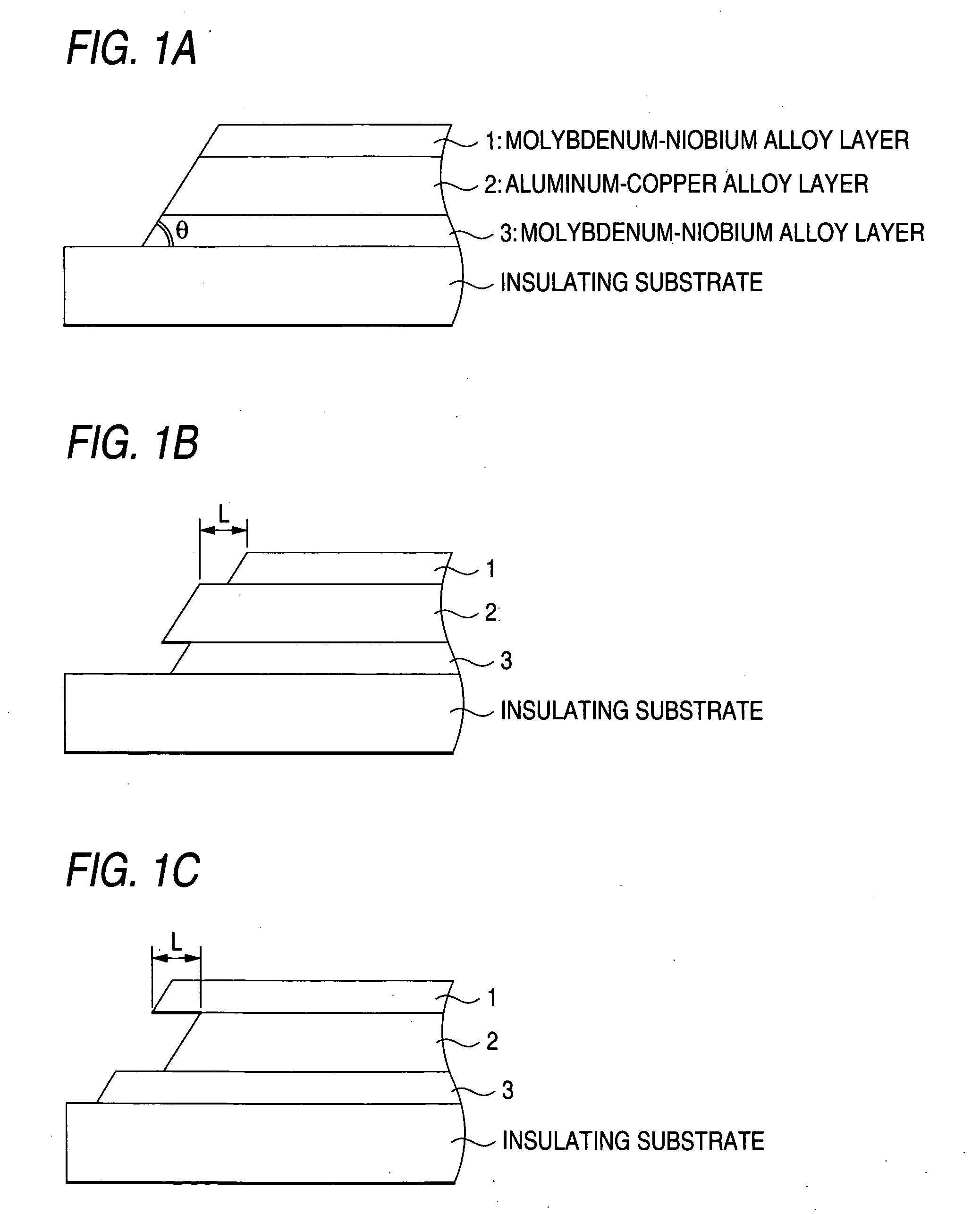Etchant and method of etching
a multi-layer film and etching technology, applied in the field ofetc, can solve the problems of increasing the area of the exposed part of the lower metal layer, exceedingly low production efficiency, and failure of insulation resistance, and achieves satisfactory precision, less adhesion, and improved etching function.
- Summary
- Abstract
- Description
- Claims
- Application Information
AI Technical Summary
Benefits of technology
Problems solved by technology
Method used
Image
Examples
examples
[0072] The invention will be explained below in more detail by reference to Examples and Reference Examples, but the invention should not be construed as being limited to the following Examples unless the invention departs from the spirit thereof.
examples 1 to 7 and reference examples 1 to 6
[0073] A molybdenum-niobium alloy layer (niobium content, 5% by weight) 3 having a thickness of 50 nm was deposited on a glass substrate by sputtering. On this layer was deposited AlCu (aluminum-copper alloy; copper content, 5% by weight) in a thickness of 300 nm as an aluminum alloy layer 2 by sputtering using argon gas. Thereafter, a molybdenum-niobium alloy layer 1 having the same composition as shown above and having a thickness of 50 nm was continuously deposited. Thus, an MoNb / AlCu / MoNb multilayer film was formed as shown in FIG. 1A, FIG. 1B, and FIG. 1C.
[0074] A positive photoresist resin layer (thickness, about 1.5 μm) was further formed thereon by spin coating, and this layer was treated by photolithography to form a fine wiring pattern. The line width of this resist pattern was about 5 μm.
[0075] This substrate was cut into pieces having a width of about 10 mm and a length of 50 mm, and these pieces were used as etching test samples.
[0076] On the other hand, a molybdenum...
PUM
| Property | Measurement | Unit |
|---|---|---|
| Percent by mass | aaaaa | aaaaa |
| Percent by mass | aaaaa | aaaaa |
| Percent by mass | aaaaa | aaaaa |
Abstract
Description
Claims
Application Information
 Login to View More
Login to View More - R&D
- Intellectual Property
- Life Sciences
- Materials
- Tech Scout
- Unparalleled Data Quality
- Higher Quality Content
- 60% Fewer Hallucinations
Browse by: Latest US Patents, China's latest patents, Technical Efficacy Thesaurus, Application Domain, Technology Topic, Popular Technical Reports.
© 2025 PatSnap. All rights reserved.Legal|Privacy policy|Modern Slavery Act Transparency Statement|Sitemap|About US| Contact US: help@patsnap.com


